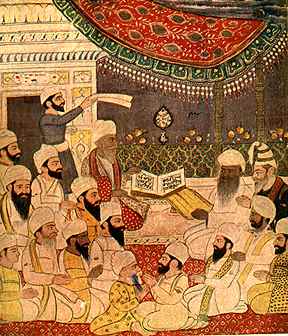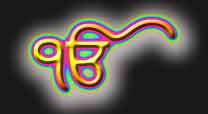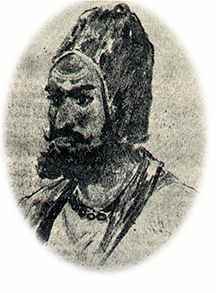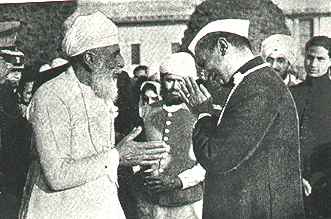


The Namdhari Sikhs known as Kukas in the political annals of India are rightly called the 'Torch bearers of Indias' Freedom struggle". As Pathfinders of political liberty from the bondage of the Imperialist British masters of India, they hold a unique place in the resistance movement. The members of the sect from the very inception are ordained and pledged to follow the multiple cult of political freedom, Panchayati Raj", combined with moral upliftment, social emancipation, and physical rejuvenation. The aims of the ingenious architect of this utilitarian socio-political edifice was to produce men of high moral character gifted with patriotic feelings ready to sacrifice their all for the sake of truth, righteousness and Motherland.
The founder Guru Ram Singh had witnessed the ruination of the Sovereign State of the Punjab with his own eyes. He had studied at close quarters and on the spot, the causes of its downfall. He had reached the conclusion, that men of high moral character only can win back freedom from the British.
In April 1857, one month before the first shot of the misnamed Indian mutiny was fired, Guru Ram Singh had raised high the Triangular white flag of Indian Independence at Bhaini Sahib his native village in Ludhiana district.


The headquarters of the Namdharies; the suc-ceeding Guru Hari Singh Ji, his wife and his sons were under the strict watch of the policeman station-ed at the entrance of his residential house. The inmates of the house were searched each time they went out and came in. Satguru Partap Singh Ji Maharaj, and his younger brothers were born in this state of semi-captivity.
In the year 1919, the Namdharies as a class joined the swadeshi, non-co-operation and Boycott programme of Mahatma Gandhi. They entered the congress en mass by the orders of Guru Maharaj Partap Singh Ji.
At the time of the historical session of the Indian National Congress at Lahore in 1929, the Namdharies openly cooperated with the National Movement of the country and stead-fastly carried out the decisions made there. With the fuller awakenings of political consciousness in India in the twenties the leaders of National Movement, became attracted towards the Namdhari politi-cal ideology which had the genesis of great and effective consequences in its basic principles.
Doctor Shri Rajindar Prasad, the Indian President paid a visit to Bhaini Sahib in the twenties. Shri Jawaharlal Nehru, India's Premier and one of the greatest men of the world, visited Bhaini Sahib twice in the years 1935 and 1953. Since 1919, the words 'Namdhari' and 'Congress' had become co-terminus and synonymous. In all political elections, in which the Congress took part since 1919, the Namdharies supported the Congress candidates.

The noble and superhuman part played by the Namdharies during the darkest days of Punjab history after the partition, in the year 1947, forms a solitary chapter, full of virtuous deeds, worthy of angles, in such circumstances and under such conditions of life. Not a single Namdhari besmeared the fair name of his sect by following the evil ways of killing Muslims, looting and destroying the evacuee property and, abduction of Muslim women. Guru Partap Singh Ji Maharaj had emphatically ordered the Namdharies to desist from such evil actions, under threat of invoking God's curse on all such persons and also expulsion from the Namdhari organisation. No other organisation in India or Pakistan, can claim or boast of keeping its members under such a rigid control.
"According to the belief of the Namdharies battle of freedom is not yet over. The outer wounds have been healed leaving ugly scars. The inner cancers throwing up poisonous virus and retarding the production of balanced growth of economic, social and political life, are still there."
As a class, they are always ready for the selfless service to the Motherland-Bharat.